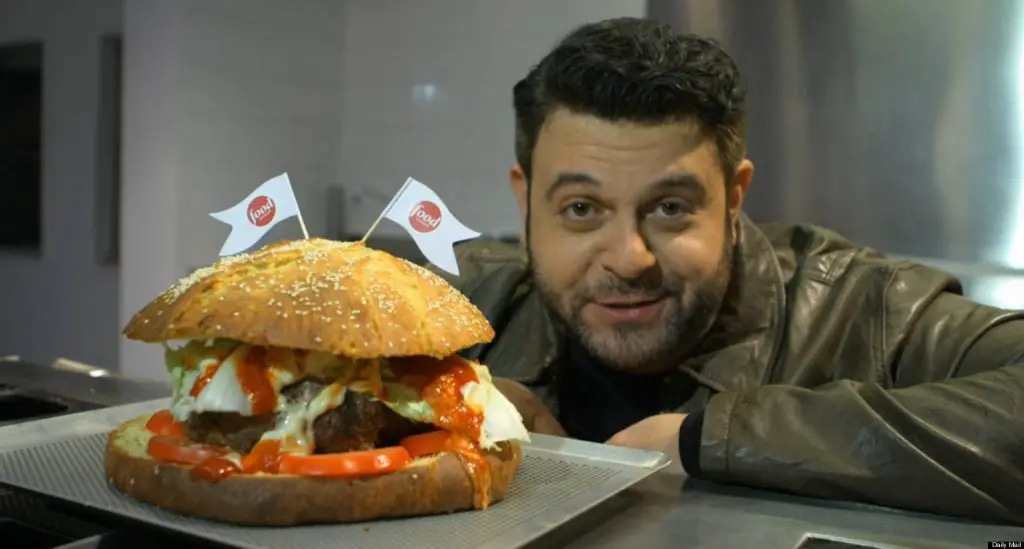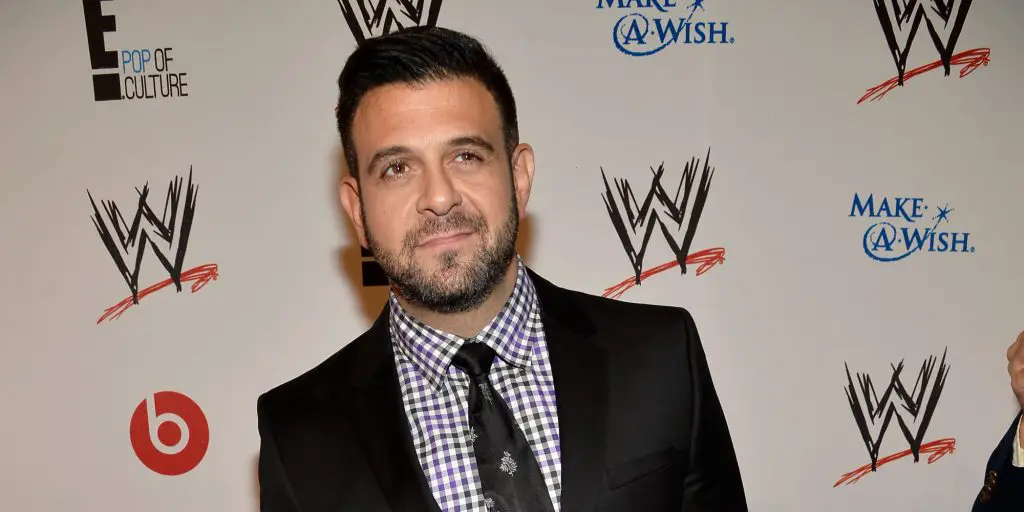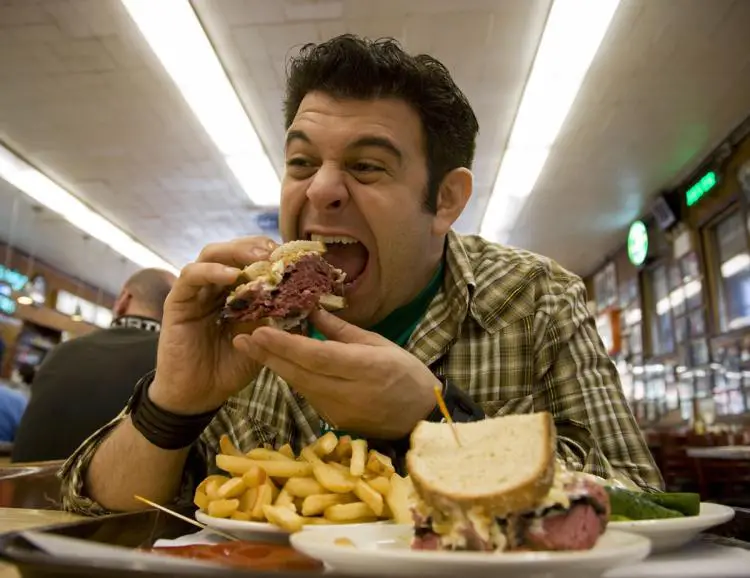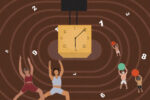Prime Time Television
The iconic show marked a low-point in American eating habits, and forced the host to quit to save his life.
By Kristina Fernandez, Florida State University
“Man v. Food” debuted on December 3, 2008, as a food reality-television series on the Travel Channel.
The show was hosted by Adam Richman, a self-described actor and food enthusiast. In each episode, Richman traveled to different parts of the United States to find restaurants that serve mouth-watering dishes, before attempting to defeat a food challenge at a local restaurant.
The show now airs in syndication on the Travel Channel, and you can find full episodes on YouTube. Be warned, the show is highly addictive and has the potential to make you feel capable of tackling a gigantic plate of food.
To prepare for each food challenge, Richman avoided eating in order to make enough room in his body for the gigantic meals, which may not sound like much of a challenge considering girls tend to do this like pros. For a couple of years, his consistency in traveling to different parts of the U.S. and eating indulgent foods seemed like a dream job, but it didn’t come without a fight. What would be the point of a show without a little conflict?
One of the most popular moments on the show was the spicy-food challenges. In each episode, Richman put himself in pain trying to defeat massive helpings of food. In some challenges, his eyes glazed over as he tried to zone out and keep eating. Getting paid to eat amazing food may seem great, but Richman may have taken it too far. Sometimes he finished, and other times he did not, but he looked like he was going to explode after every challenge.

“Man v. Food” is a show that displays the overindulgence of the American diet. Every day, more and more Instagram profiles, or other forms of social media, are dedicated to delicious foods, known as “food porn.” You know the ones. You’re scrolling down the explore page, and all of a sudden, a video catches your eye of fudge cascading down a fresh brownie with ice cream on top. Are you drooling yet? That’s pretty much what goes down on every food profile.
Americans are known to push the boundaries with portion size, preferring to feel like they’re about to pop rather than be satisfied with the meal. The practice of overeating and overindulging has become the norm, and “Man v. Food” proves it. It’s not shocking to see Richman gorge large portions of food; it’s exciting. You watch him, and you want him to finish all of the food.
Countless documentaries have been made to emphasize the nation’s issue of obesity. Richman acts as a mirror, showing how the average American engages in overindulgence. Often, people do not see how much they are overeating, because they perceive massive plates of food as normal.
Many individuals have also fallen into the mindset that you are done eating when the plate is clean. It has almost become a rule. When you were a kid, your grandparents constantly made you take one more bite, even though you were convinced that another forkful would make you vomit.
The majority of Richman’s food challenges employed this rule. His eyes glazed over as he moved in what appeared to be slow motion, shoveling food down his throat. These habits have been adopted by younger generations, as childhood obesity has been steadily rising over time, and are causing serious future health issues.
The fatty, sugary substances that Richman was challenged to consume are the kind of food that plagues Americans, because even though they’re addicting and delicious, the impact they have on health is detrimental. The fact that viewers cheer Richman on, rather than cringe while watching him, demonstrates the normalization of overeating.

The show did not end for a lack of viewers or interest, but because Richman needed to retire for his health. The constant cycle of fasting and overeating took a significant toll on his physical and mental health. After some time, Richman emerged, showing off a drastically slimmer figure.
Richman credited leaving the show as how he managed to lose most of his weight, and he was sure to get in around 10,000 steps a day and monitor his intake. In an interview, he described a shock with his appearance and a dislike for his previously “doughy face.” He had to move away from the hand that fed him (literally), in order to take care of his long-term health.
While Richman was a mirror image of bad eating and unhealthy living, his lifestyle following “Man v. Food” is an inspiration if you are trying to make a change, hit the gym and eat some vegetables.
You don’t have to shy away from eating your body weight in ice cream, cheese fries or a burrito that weighs as much as a newborn baby (they don’t call it “treat yo self” for nothing). If you want to dig into that molten-lava brownie sundae you’ve been thinking about, then go for it!
Keep in mind that the best policy is probably to stick to moderation though, because too much “treat yo self” can have negative impacts on your health and wallet.

















